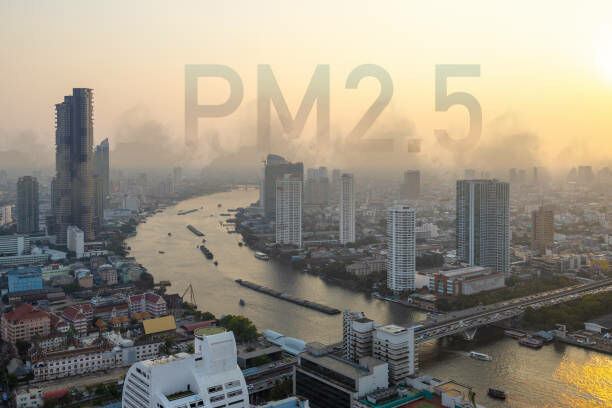Bangkok air pollution levels exceed safety standards

Air pollution in Bangkok and 30 provinces have been reported to exceed safe levels of PM2.5, according to the latest air quality monitoring. Despite some improvements forecasted for the coming week, public health warnings remain in place, advising residents in affected areas to minimise outdoor activities.
As of 7am yesterday, the Air Pollution Control Department of the Ministry of Natural Resources and Environment provided an update on the country’s air quality. Over the past 24 hours, the average levels of PM2.5—a dangerous particulate matter—ranged from 7.3 to 95.9 micrograms per cubic metre, surpassing the safety standard of 37.5 microgrammes per cubic metre.
The unsafe levels of air pollution have been detected in several provinces, including Bangkok, Pathum Thani, Nakhon Sawan, Uthai Thani, Chai Nat, Sing Buri, Lopburi, Saraburi, Ang Thong, Phra Nakhon Si Ayutthaya, Kanchanaburi, Ratchaburi, Nakhon Nayok, Sa Kaeo, Chachoengsao, Nong Khai, Nakhon Phanom, Nong Bua Lamphu, Mukdahan, Khon Kaen, Kalasin, Roi Et, Amnat Charoen, Chaiyaphum, Yasothon, Ubon Ratchathani, Sisaket, Nakhon Ratchasima, Buri Ram, and Surin.
In the north, two areas exceeded the standard, with levels between 7.3 and 58.2 micrograms per cubic metre. The Northeastern region mostly surpassed the standard with readings of 13.1 to 92.0 micrograms per cubic metre. Central and Western areas also showed high levels, ranging from 19.6 to 95.9 micrograms per cubic metre.
In the east, three areas exceeded the standard, with levels between 18.2 and 43.2 micrograms per cubic metre. Meanwhile, the South maintained relatively good air quality, measuring between 10.9 and 31.5 micrograms per cubic metre, reported KhaoSod.
Forecasted improvement
The situation in Bangkok and surrounding areas is particularly concerning, with 12 areas showing higher than standard readings, ranging from 19.1 to 45.4 micrograms per cubic metre. However, forecasts for the upcoming week from February 3 to February 9 suggest an improvement, with a downward trend in PM2.5 levels expected in Bangkok and its vicinities between February 4 and February 7.
In the northern provinces, there will be a continuous improvement, while certain areas in the Northeast are expected to see reduced levels between February 6 and February 9. The east is also projected to experience decreased pollution levels between February 5 and February 9, and the south is likely to maintain its satisfactory air quality.
Health advisory notices encourage the general public to stay vigilant regarding their health, reduce time spent on outdoor activities, or use personal protective equipment as necessary. Those with special health care needs should particularly heed these warnings, reducing outdoor activity time or using protection.
If any health symptoms arise, seeking medical advice is recommended, especially for residents in high-risk areas (red zones), where outdoor activities should be avoided or protective measures taken. Information on the air quality situation can be followed through the Air4Thai.com and airbkk.com websites, as well as the Air4Thai and AirBKK mobile applications.
In related news, Mahidol University scientists discovered a potential link between PM2.5 exposure and osteoporosis, observing increased osteoclasts in lab rats. The findings underline the urgent need for comprehensive research on PM2.5’s health impacts.
Latest Thailand News
Follow The Thaiger on Google News:


























